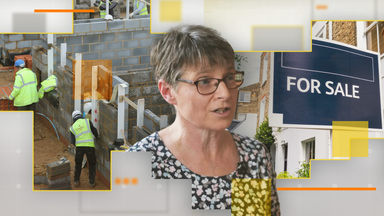Capital gains tax (CGT) is payable when an individual sells a valuable asset they own – most commonly, this will be a property that’s not their main residence, or shares.
It’s one of a number of stealth taxes impacting taxpayers this April and beyond, because the Government has slashed the tax-free allowance – that is, how much you can profit from selling an asset before tax is due.
The CGT threshold fell from £12,300 to £6,000 in April 2023, and has now halved to just £3,000 as of April 6 this year. It means more profits from the sale of valuable assets can now be taxed.
It’s important to understand how this tax works to make sure you’re clear when it’s due, when you need to inform HMRC of the profit income, and how much you’ll need to pay.
Here, Telegraph Money explains how to navigate the rules, and make sure you don’t pay more CGT than you need to.
What is capital gains tax?
This is a charge imposed by HM Revenue & Customs (HMRC) on profits made by individuals when “disposing” of – typically selling – assets.
Your “gain”, or profit, is normally the difference between what you paid for an asset and what you sell it for, but you might be able to deduct some costs from this figure – for instance, if you had to pay to sell the asset.
CGT is charged differently depending on the asset and the rate of income tax you pay, and is only due once profits exceed your annual capital gains tax allowance of £3,000.
Couples who jointly own assets can effectively combine this allowance, potentially allowing a gain of £6,000 without paying any tax.
How does CGT work on property?
You don’t typically pay CGT on the property you live in, only on properties like a second home or buy-to-let.
The rate of tax charged depends on your level of income you have – if you’re a basic-rate taxpayer (with income of less than £50,270), you’ll pay 20pc on gains from property, whereas those who pay higher-rate tax will pay 28pc for disposals in the 2023-24 tax year, and 24pc for disposals in 2024-25.
How does it work on your primary residential property?
If you own one home and have lived there since you bought it, then it should be a straightforward case that no CGT is due on any profit made when you sell up. This is thanks to a relief known as private residence relief.
However, should you own other properties it may not be so clear cut. For example, if you have ever rented out your home – perhaps while you worked abroad, or moved in with a partner for a spell – then you might be liable to pay a proportion of CGT when you sell, based on how long the property was rented for.
Zoe Davies, of accountancy firm Mazars, added that second homeowners can declare which property is their main residence, to make it clear where CGT is due.
She said: “If you have a second home you can nominate which is your primary home – that is, where you actually live – to help make sure you benefit from private residence relief if you sell.”
To nominate which property is your home, you’ll need to write to HMRC.
To do this (which you can do within two years every time your combination of homes changes), write to HMRC at: Capital Gains Tax Queries, HM Revenue and Customs, BX9 1AS. You’ll need to provide the address of the home you want to nominate, and all the owners of the property must sign the letter.
How does it work for second homes?
Tax is due on the gains you make from the sale of a second home, which exceed your annual CGT allowance.
For property, CGT is set at 24pc for higher-rate taxpayers and 18pc for basic rate taxpayers. Prior to April 6, 2024 the higher rate was charged at 28pc. The Chancellor announced the cut in the Budget in March to try and encourage property investors to free up homes in areas where housing supply is short.
You will be taxed at the relevant rate on the sale profits of your second home, and you must report the sale to HMRC via a “residential property return”, and pay the estimated liability within 60 days of completing your sale.
You’ll also declare this on a self-assessment tax return as capital gains count as a source of income.
Ms Davies added: “If you spend significant time [living in] a second home, however, it may be that you are eligible for a reduced tax bill through private residence relief.”
How does capital gains tax work on rental property?
For CGT purposes, selling buy-to-let properties works in the same way as selling a second home.
Therefore, you need to report a sale of a buy-to-let property to HMRC and pay any tax due within 60 days of the sale completing. The rates are also the same – 24pc for higher rate taxpayers (in 2024-25) and 18pc for basic rate taxpayers.
How does capital gains tax work on shares?
If you sell some investments and they are held outside an Isa, then you must pay CGT on profits over the annual allowance of £3,000.
The rates you’ll pay are lower than for property – basic-rate taxpayers pay a CGT rate of 10pc, and for higher- and top-rate taxpayers, it’s 20pc.
You’ll include the gains on your self-assessment tax return – there’s no rush to declare or pay within a more immediate time frame, as is the case of selling property.
However, be aware that tax may still be due even if you don’t sell the shares in a traditional way.
Ms Davies said: “Some investors fall foul of the rules when they give shares to, say, their son or daughter, thinking there’s no capital gains tax due because they’re not selling them. However, the HMRC definition is that capital gains tax is triggered on the ‘disposal of assets’, so even though no money is changing hands, they could still trigger a tax bill. Any shares gifted should be declared on a self- assessment tax return.”
Others might get caught out thinking they owe CGT when it’s actually income tax that’s applicable in some cases.
Ms Davies said: “For example, if you own a company and sell some of your shares back to the company, the money received may actually be classed as income by HMRC, and so income tax is due rather than capital gains tax.”
Do you pay capital gains tax on cryptocurrency?
Cryptocurrency is treated as a form of investment, and regulated in a similar way to stocks and shares.
As such, profits on selling some or all of your crypto holdings will be taxable. Giving away crypto won’t solve the tax issue (unless it’s to your spouse or civil partner) because, as with shares, you’re still “disposing” of the tokens and so will trigger CGT if you’ve made a profit on your investment.
It’s not just when you sell crypto that CGT might be payable. It can also be due if you use it to pay for goods or services.
In December, HMRC launched a voluntary disclosure campaign, encouraging investors who had not declared any gains from crypto assets to come forward and pay up.
Capital gains tax FAQs
How is capital gains tax calculated?
The rate of CGT you pay is determined by a combination of your overall earnings, and the type of asset you’re selling.
However, other factors can also come into play. For example, if you’ve made any losses on some assets you’re selling, you’ll be able to offset those against your gains in order to reduce your bill.
You can also carry losses forward from past tax years, but only up to four years after the end of the tax year in which you sold the asset.
What percentage of capital gains tax do I pay?
That depends on your income tax rate and what you’re selling – or disposing of.
For the 2024-25 tax year, CGT is charged at the rate of either 10pc for shares or 18pc on property for basic-rate taxpayers. For higher or additional rate taxpayers, the rate is either 20pc or 24pc.
As your gains are added to your annual income, it’s possible for gains to push you into a higher tax band. If that happens, then you’ll have to pay the higher rate of CGT on your gains.
How does HMRC know about capital gains?
The onus is on you to report any capital gain that gives rise to a tax liability. If you’re selling a property, you should declare it and pay the bill within 60 days of the sale completion date. You need to declare it on a self-assessment tax return, too.
For selling shares, you just need to include the figures on your self-assessment tax return. If you don’t already do one each year, you will need to complete one for the tax year in which you had a capital gain.
There are various ways HMRC can tell if assets have been sold – be it Land Registry records for property sales, stamp duty returns, trading records – and there can be drastic consequences if it finds out about disposals you have failed to declare.
Receiving taxable income and failing to report it to HMRC counts as tax evasion, and can result in fines, penalties and even criminal proceedings.
What is the three-year rule for selling property?
Also known as the 36-month rule, this rule is in relation to disposing of a property that has not always been your main home – for instance, perhaps you once rented it out.
However, the 36–month period currently only applies to those who are disabled, or whose spouse or civil partner is disabled, or who are moving to a long-term care home.
For everyone else, this is actually a nine-month rule. If you lived in the property as your main or only home at some point during the last nine months of ownership, you may be fully relieved from CGT.
How long do you have to keep a property to avoid capital gains tax in the UK?
In Britain, there’s no specific time to keep a property to avoid CGT. The tax usually applies when you sell a property that’s not your main residence, such as a buy-to-let, a holiday home or perhaps a property you’ve inherited.
How are long-term capital gains taxed?
Assets you’ve held for a long time are taxed in the same way as any other asset.
Ms Davies added: “There were previous tax laws which incentivised holding assets for longer, but these no longer apply.”
Disclaimer: The copyright of this article belongs to the original author. Reposting this article is solely for the purpose of information dissemination and does not constitute any investment advice. If there is any infringement, please contact us immediately. We will make corrections or deletions as necessary. Thank you.



